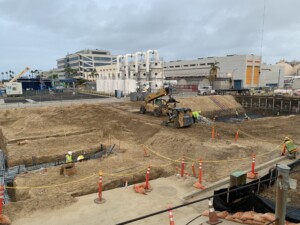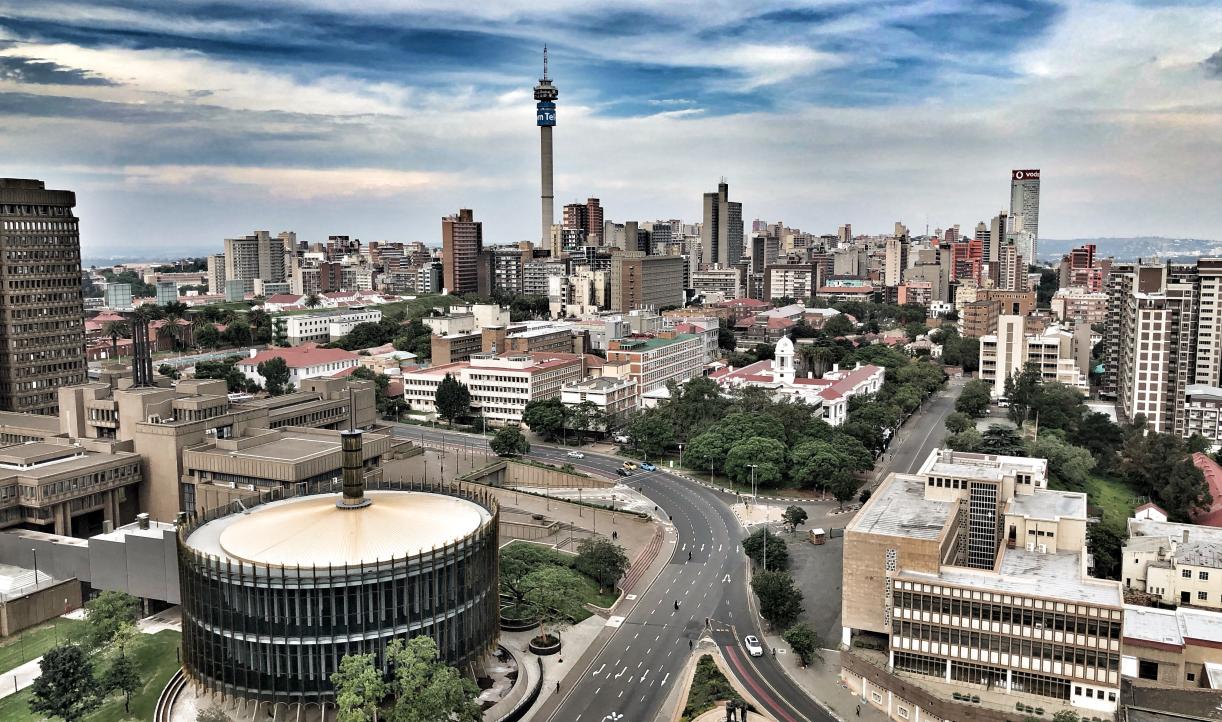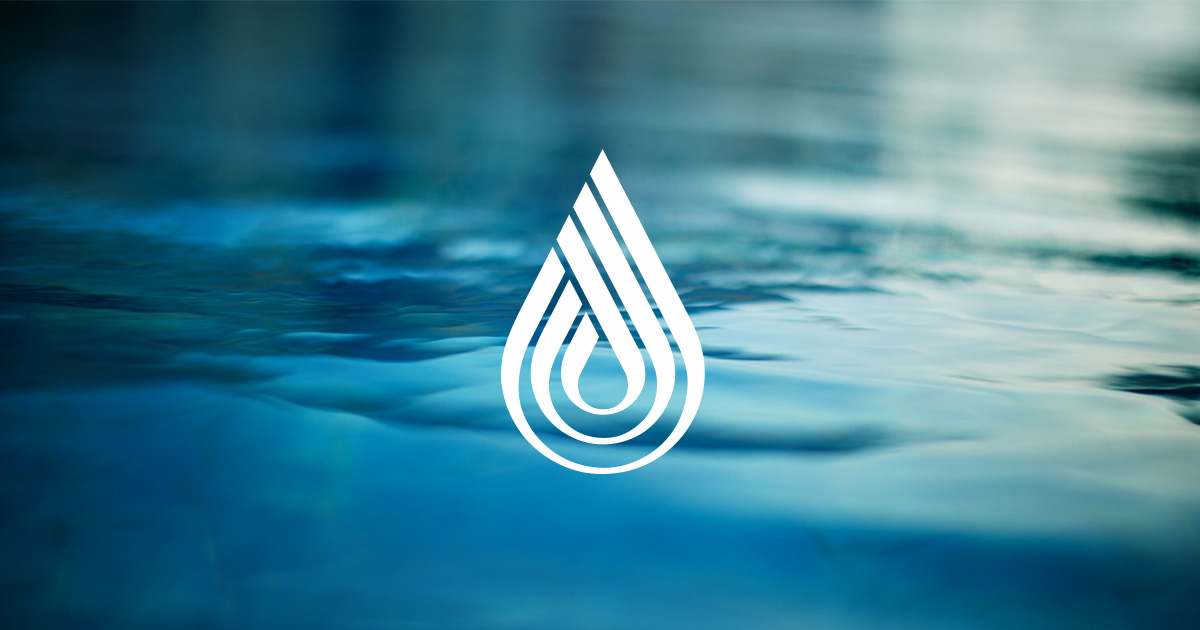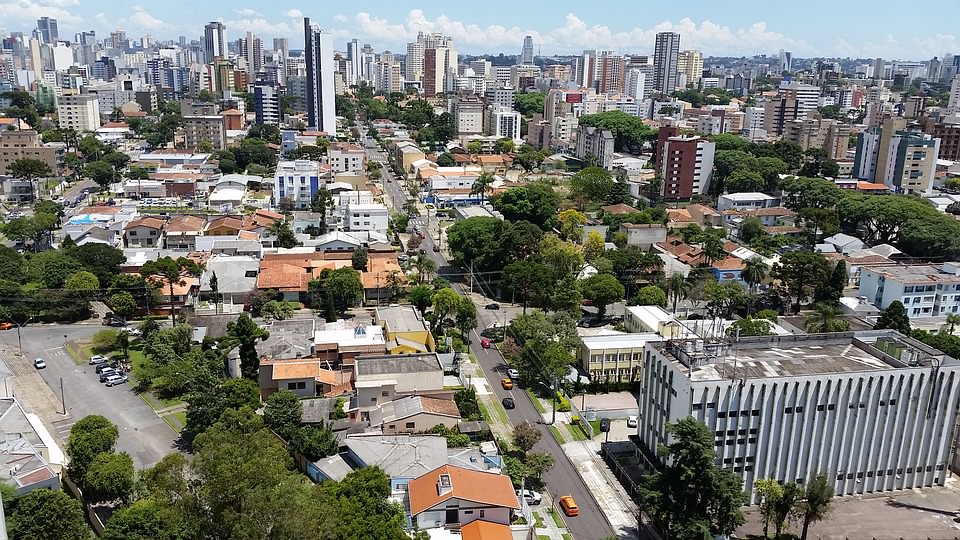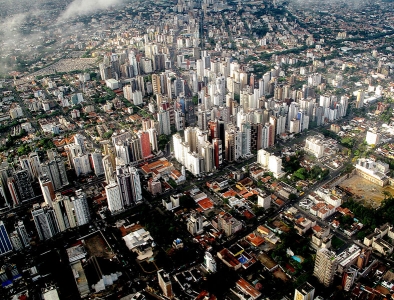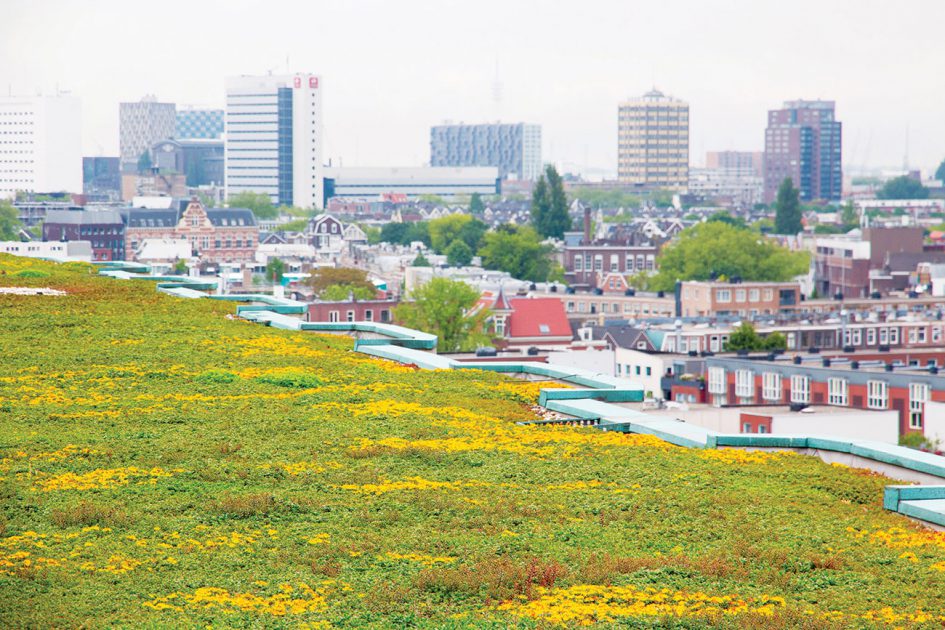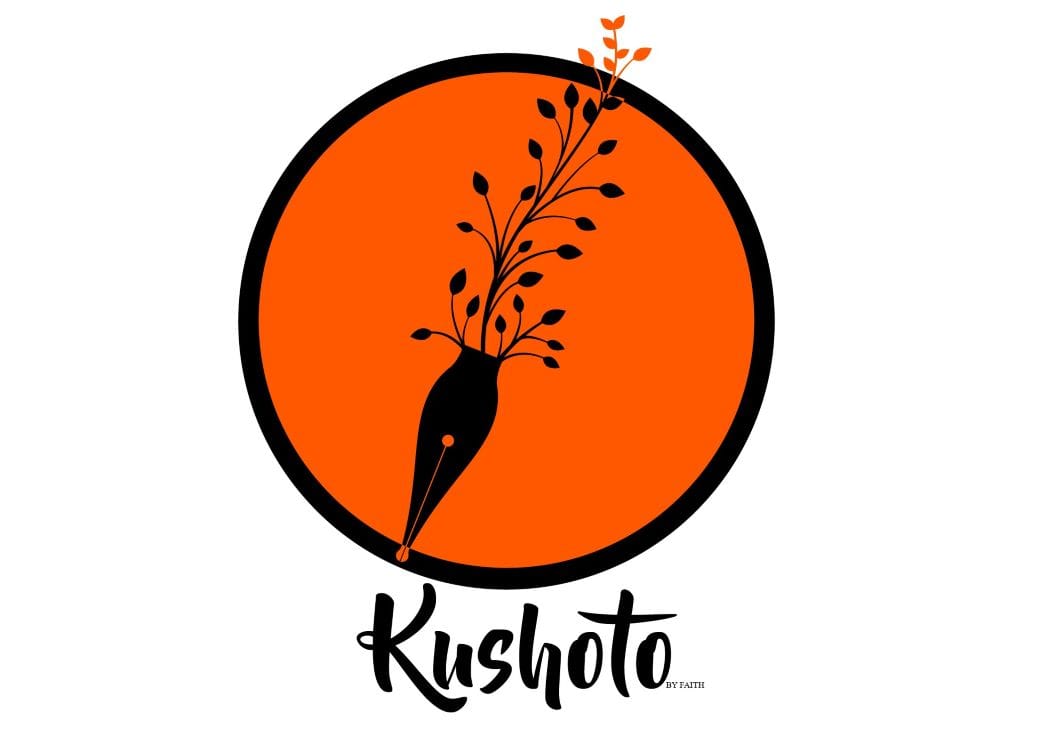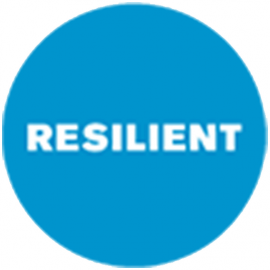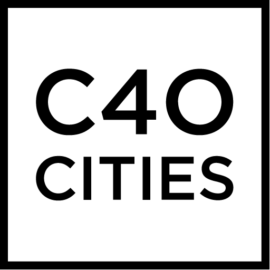Rain, Reuse, Replenish: The Cities Leading the Water Sustainability Revolution
As water scarcity grows, some cities are leading the way with bold innovations to transform how we collect, use, and sustain this vital resource
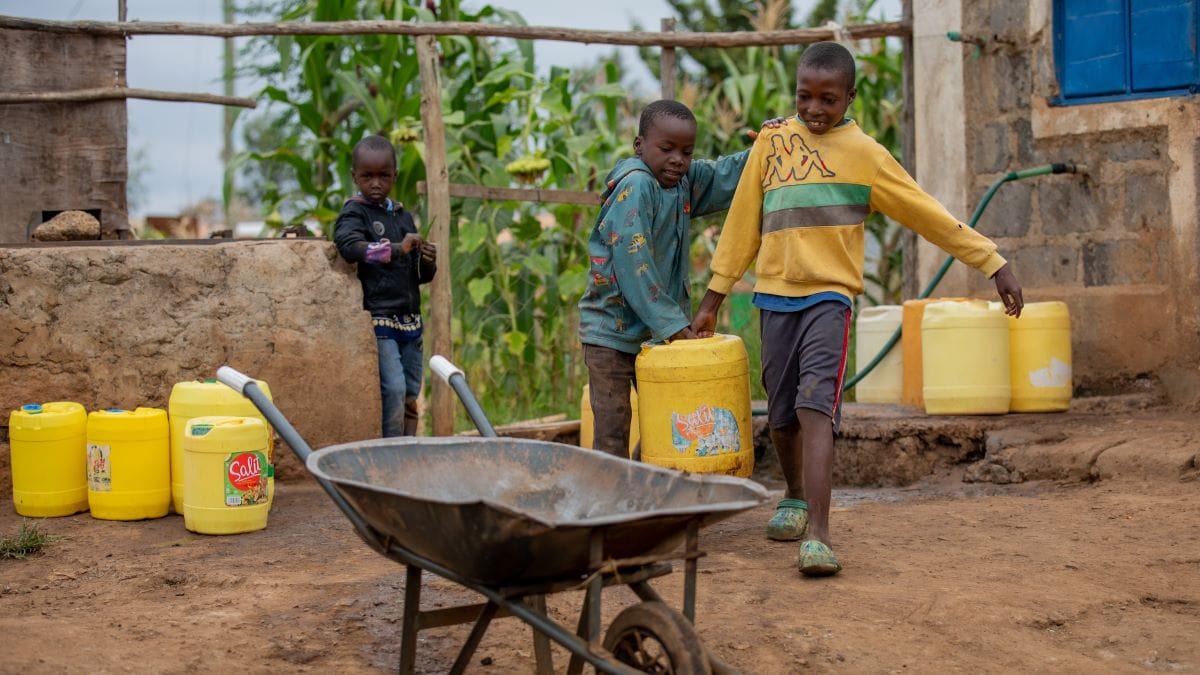
Water is at the heart of life and development, yet its scarcity is becoming one of the most pressing challenges of our time. From the sprawling metropolises of the Global North to the rapidly urbanizing cities of Africa, water stress is a shared reality driven by climate change, overpopulation, and mismanagement.
As the world faces this growing crisis, some cities are taking bold steps to revolutionize how we collect, use, and replenish this vital resource.
At Kushoto, we believe in championing stories that inspire hope and action, particularly for Africa and other regions on the frontline of climate change. This article explores global pioneers in water sustainability and draws lessons for our own cities and communities.
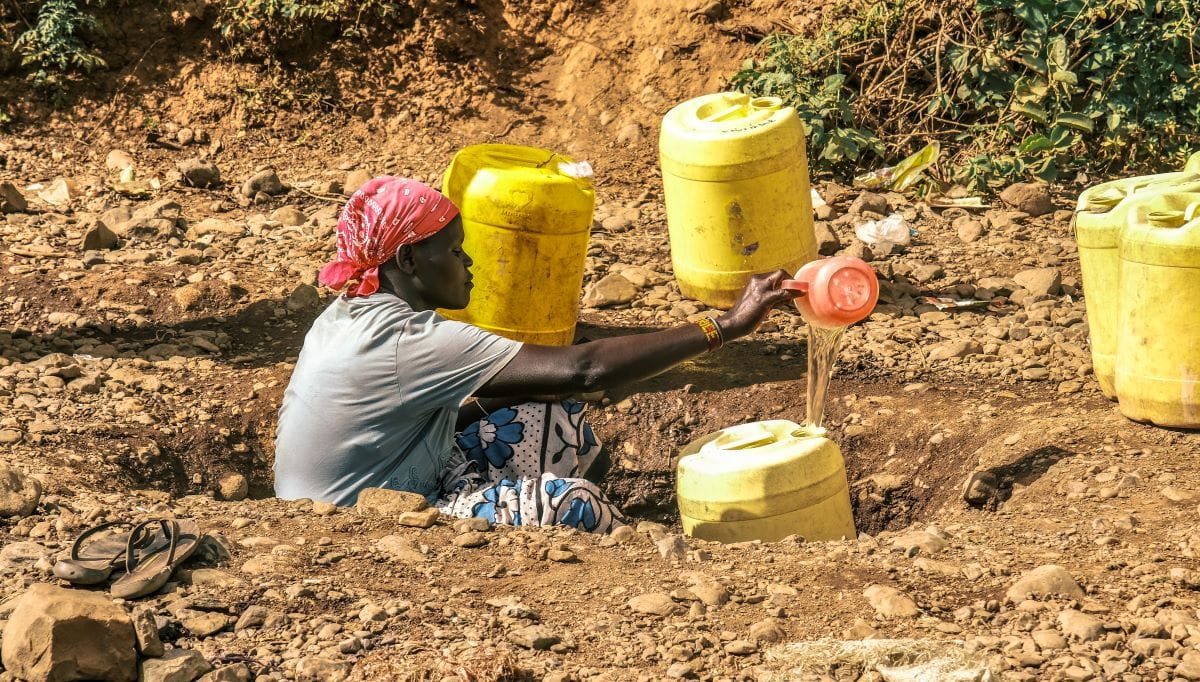
By spotlighting innovative strategies like rainwater harvesting, wastewater recycling, and aquifer replenishment, we aim to ignite a conversation about how African cities can adapt these solutions to meet the unique challenges and opportunities of our continent.
As we reimagine a future of water security, let us look to these trailblazing examples and explore how their ideas can shape an African water sustainability revolution—one that centers equity, resilience, and community empowerment.
Capturing the Rain: Singapore
Singapore, a small island nation with no significant natural water resources, has emerged as a global leader in sustainable water management.
Confronting challenges like limited land, a high population density, and reliance on imported water, the city-state has developed the innovative "Four National Taps" strategy—a comprehensive system ensuring a reliable and sustainable water supply.
The Four National Taps: A Diversified Approach
Singapore’s water strategy revolves around diversifying its water sources to reduce dependency on any single supply. The Four National Taps integrates four key sources:
- Local Catchment Water: Rainwater collected through an extensive network of drains, canals, and reservoirs.
- Imported Water: Agreements with neighboring Malaysia provide a supplemental water supply.
- NEWater: Reclaimed and ultra-purified wastewater meets a significant portion of the nation’s water demand.
- Desalinated Water: Treated seawater offers a secure, climate-resilient resource.
This multi-pronged approach enables Singapore to maintain water security, even amid extreme weather or geopolitical uncertainty.
Transforming Urban Spaces into Catchments
Singapore has turned its lack of natural rivers and lakes into an opportunity by transforming urban landscapes into water catchments. This is achieved through an intricate network of canals, drains, and reservoirs:
- Land Use Integration: Two-thirds of Singapore’s land is now designated as water catchment areas. Rainwater is channeled from urban surfaces into an elaborate system of drains and canals, which lead to reservoirs for storage.
- Advanced Reservoir Systems: Singapore boasts 17 reservoirs, including the Marina Reservoir, created by damming the mouth of Marina Bay. This dual-purpose reservoir helps manage flood risks and stores rainwater for treatment.
- Green Infrastructure: The Active, Beautiful, Clean Waters (ABC Waters) Program incorporates green infrastructure like bioretention swales and wetlands to capture and treat rainwater while enhancing biodiversity and urban aesthetics.
Recycling Water: The NEWater Solution
NEWater, one of Singapore’s most groundbreaking innovations, demonstrates how wastewater can be transformed into a sustainable resource.
- Collection and Treatment: Used water is collected through a dual-pipe system and sent to water reclamation plants.
- Three-Step Purification Process: NEWater undergoes a rigorous three-step treatment process:
- Microfiltration: Removes particles and microorganisms.
- Reverse Osmosis: Filters out dissolved salts, heavy metals, and viruses.
- Ultraviolet Disinfection: Ensures that the final product is microbiologically safe.
- Meeting Demand: NEWater meets up to 40% of Singapore’s water demand. While most is used by industries requiring ultra-pure water, a portion is blended with reservoir water for drinking purposes.
NEWater is cost-effective, reliable, and environmentally friendly, making it a cornerstone of Singapore’s water resilience strategy.
Desalination: Tapping the Sea
With five desalination plants, Singapore converts seawater into potable water using advanced reverse osmosis technology. This ensures water availability even during prolonged dry spells.
Water Conservation and Public Engagement
Singapore’s success also stems from its ability to involve the public in water conservation efforts:
- Pricing Policies: Water is priced to reflect its scarcity and encourage efficient use.
- Public Campaigns: Initiatives like “Every Drop Counts” educate citizens about water-saving practices.
- Technological Innovation: Smart water meters help households monitor and reduce water usage.
Takeaway: Lessons for the World
Singapore’s integrated approach to water management demonstrates that even in regions with limited natural resources, sustainability is achievable through innovation, efficient use of technology, and community engagement.
By harnessing rainwater, recycling wastewater, and leveraging seawater desalination, Singapore has created a resilient water system that many other cities, particularly in drought-prone areas, can emulate.
Reusing Every Drop: Los Angeles and the Hyperion Water Reclamation Plant
Los Angeles (LA), a sprawling metropolis in one of the driest regions of the United States, has faced severe water scarcity driven by recurrent droughts, a growing population, and overreliance on imported water.
In response, the city has adopted a comprehensive water management plan to secure its future water needs through conservation, recycling, and storm water capture.
A centerpiece of this strategy is the Hyperion Water Reclamation Plant, one of the largest and most advanced wastewater treatment facilities in the world.
The Challenge: Confronting Scarcity with Innovation
LA’s water challenges are shaped by its dependence on imported water, which accounts for over 85% of its supply. Most of this water is transported from hundreds of miles away, from the Colorado River, the Sacramento-San Joaquin Delta, and other distant sources.
This dependence exposes the city to environmental, economic, and political risks.
Recognizing the need for local, resilient water sources, the city developed an integrated water management strategy centered on reducing waste and increasing self-sufficiency.
Hyperion: Transforming Wastewater into a Resource
Hyperion treats over 260 million gallons of wastewater daily, converting it into a valuable resource serving over 4 million residents:
The facility treats over 260 million gallons of wastewater daily, serving over 4 million residents:
- Advanced Treatment: After primary and secondary treatment, water undergoes advanced filtration and disinfection, ensuring high-quality reclaimed water.
- Reclaimed Water Usage: Treated water supports irrigation, industrial cooling, and aquifer replenishment, contributing to a sustainable drinking water supply.
The city aims to recycle 100% of its wastewater by 2035 under the "One Water LA Plan."
Stormwater Capture and Replenishing Aquifers
Complementing wastewater recycling, LA has invested heavily in capturing and storing stormwater, which is otherwise lost to urban runoff.
- Green Infrastructure: Projects like bioswales, permeable pavements, and rain gardens help capture and filter rainwater before it flows into storm drains.
- Spreading Grounds: Large basins and spreading grounds allow stormwater to percolate into aquifers, boosting groundwater reserves.
- Stormwater Parks: Multi-functional parks like the South LA Wetlands Park provide recreational space while filtering and storing stormwater.
Community Engagement in Conservation
To reduce overall demand, Los Angeles has implemented robust water conservation programs:
- Regulation: Strict limits on outdoor water use during droughts and incentives for replacing lawns with drought-tolerant landscaping.
- Education: Public outreach campaigns, such as “Save the Drop,” a Mayor’s Fund sponsored campaign that encourages residents to adopt water-saving habits.
- Technology: Smart irrigation systems and high-efficiency fixtures help households and businesses reduce water consumption.
Energy and Sustainability at Hyperion
Hyperion is not only transforming wastewater into a resource but also pursuing sustainability in its operations:
- Energy Recovery: Methane gas from wastewater treatment is captured and converted into renewable energy, powering much of the facility.
- Carbon Reduction: Efforts to upgrade infrastructure and optimize energy use have significantly reduced the plant’s carbon footprint.
Lessons from the Hyperion Model
The Hyperion Water Reclamation Plant exemplifies how cities can turn wastewater into a sustainable water source while promoting environmental stewardship. Key takeaways include:
- Integrated Planning: Combining wastewater recycling, stormwater capture, and conservation creates a holistic water management system.
- Infrastructure Investments: Modernizing facilities and building green infrastructure are critical for long-term sustainability.
- Community Involvement: Engaging residents in conservation efforts ensures public buy-in and reduces water demand.
Los Angeles demonstrates how comprehensive water management—centered on recycling, stormwater capture, and conservation—can transform a water-stressed city into one with a sustainable future.
Embracing Water Resilience: Rotterdam and the Rotterdam Adaptation Strategy
Rotterdam, a leading port city in the Netherlands, exemplifies urban water resilience. Situated below sea level, it contends with rising sea levels, storm surges, and heavy rainfall.
To confront these challenges, Rotterdam developed the Rotterdam Adaptation Strategy (RAS) in 2013—an innovative plan to safeguard the city while enhancing livability and sustainability.
Central to RAS are multi-functional solutions that merge flood protection, water storage, and urban design, transforming vulnerabilities into strengths.
The Challenge: Living Below Sea Level
Rotterdam's geography presents unique challenges:
- Rising Sea Levels: As a delta city at the mouth of the Rhine-Meuse-Scheldt river system, Rotterdam is highly susceptible to coastal flooding.
- Heavy Rainfall: Intensifying rain events, exacerbated by climate change, overwhelm drainage systems and increase the risk of urban flooding.
- Urban Density: A growing population and expanding infrastructure reduce natural water absorption, heightening flood risks.
With these pressing challenges, Rotterdam needed a comprehensive approach that goes beyond traditional flood defenses.
Rotterdam Adaptation Strategy: A Blueprint for Resilience
Launched in 2013, the Rotterdam Adaptation Strategy (RAS) integrates climate adaptation into urban planning, ensuring the city remains safe, livable, and economically vibrant. Its goals include:
- Flood Protection: Strengthening defenses against coastal and river flooding.
- Water Storage: Managing rainfall and preventing urban flooding through innovative solutions.
- Water Quality Improvement: Enhancing the health of water bodies for ecological and recreational purposes.
- Urban Aesthetics and Livability: Creating multi-functional spaces that combine water management with improved quality of life.
Innovative Water Resilience Projects
- The Water Squares: Rotterdam's iconic water squares, such as Benthemplein, transform public spaces into dual-purpose areas. During heavy rainfall, these squares collect and temporarily store excess water, reducing pressure on drainage systems. When dry, they serve as recreational areas for sports, leisure, and cultural events, integrating engineering with aesthetics and engaging residents in water management.
- The Maeslantkering Storm Surge Barrier: This engineering marvel is part of Rotterdam’s flood defense system. A pair of massive gates can close off the New Waterway during extreme storm surges, protecting the city from catastrophic flooding.
- Green Roofs and Façades: Rotterdam has embraced green infrastructure, installing vegetation on rooftops and walls to absorb rainwater, reduce runoff, improve insulation, enhance air quality, and boost urban biodiversity.
- Floating Urban Districts: As part of its long-term vision, Rotterdam is exploring floating neighborhoods. The city has piloted floating buildings and farms that can adapt to fluctuating water levels, demonstrating resilience and innovation in urban planning.
- Rainwater Harvesting and Storage: Through systems like permeable pavements and underground reservoirs, Rotterdam captures and stores rainwater for later use, minimizing runoff and conserving water.
Community Engagement and Public Awareness
Rotterdam’s success in water resilience is also driven by its ability to involve residents and businesses in climate adaptation:
- Public Awareness Campaigns: Programs educate citizens about the importance of water management and how their actions contribute to resilience.
- Private Sector Collaboration: Incentives encourage property owners to install green roofs and contribute to sustainable water practices.
- Interactive Planning: Initiatives like the Rotterdam Climate Proof program engage stakeholders in designing adaptive solutions that meet local needs.
Sustainability and Economic Benefits
Rotterdam’s adaptive approach delivers environmental, social, and economic advantages:
- Flood Risk Reduction: Infrastructure improvements minimize the impact of storms and rising sea levels.
- Urban Regeneration: Multi-functional spaces like water squares boost property values and neighborhood appeal.
- Global Leadership: Rotterdam attracts international attention and investment as a model for climate-resilient cities.
Takeaway: Learning from Rotterdam
Rotterdam’s Adaptation Strategy demonstrates how cities can turn water challenges into opportunities by embracing multi-functional solutions that blend engineering, design, and community engagement.
The city’s proactive and integrated approach is a model for urban centers worldwide, particularly those at risk from rising sea levels and extreme rainfall.
For regions like Africa, where rapid urbanization and climate change exacerbate water challenges, Rotterdam’s strategies highlight the importance of planning, innovation, and community-driven solutions.
By prioritizing resilience and sustainability, cities can ensure water security while enhancing quality of life.
Securing the Future: Perth’s Water Conservation and Desalination Strategy
Perth, Australia, exemplifies effective adaptation to water scarcity in an arid and warming climate.
As the capital of Western Australia, Perth has faced challenges in maintaining a reliable water supply due to declining rainfall and a growing population.
Over the past two decades, the city has implemented a comprehensive approach to address water scarcity, combining strict conservation measures with advanced desalination technology.
At the heart of this strategy are desalination plants, such as the Perth Seawater Desalination Plant, which provide a climate-independent source of drinking water.
Together with public awareness campaigns and innovative water-saving technologies, Perth has transformed its water management system to ensure sustainability and resilience.
The Challenge: Dwindling Rainfall and Growing Demand
Perth’s water challenges are largely driven by:
- Climate Change: Rainfall in Perth’s catchment areas has decreased by over 15% since the mid-1970s, significantly reducing the city’s reliance on dams for water.
- Population Growth: With a growing urban population, the demand for water has steadily increased, adding pressure to already limited resources.
- Over-extraction of Groundwater: Heavy reliance on groundwater for irrigation and drinking water has stressed aquifers, threatening long-term sustainability.
These factors compelled Perth to rethink its water supply strategies and diversify its sources.
Perth Seawater Desalination Plant: A Game-Changer
Opened in 2006, the Perth Seawater Desalination Plant (PSDP) was the first large-scale seawater desalination facility in Australia.
Located in Kwinana, south of Perth, the plant produces 140,000 megaliters of fresh drinking water annually, supplying nearly 18% of Perth’s water needs.
How Desalination Works
- Intake: Seawater is drawn from the Indian Ocean and pre-treated to remove impurities like sand and debris.
- Reverse Osmosis: The core process involves forcing seawater through semi-permeable membranes at high pressure, separating salt and other dissolved minerals to produce freshwater.
- Post-Treatment: The desalinated water is treated and blended with other sources to ensure it meets drinking water standards.
- Energy Efficiency: The plant uses renewable energy from a nearby wind farm to offset the high energy requirements of desalination, reducing its carbon footprint.
Beyond Desalination: Diversifying Perth’s Water Portfolio
Perth’s water strategy goes beyond desalination to create a resilient and diversified water supply system:
- Groundwater Replenishment Scheme: The city has implemented a Managed Aquifer Recharge (MAR) system, where treated wastewater is purified to drinking water standards and re-injected into aquifers. This provides a sustainable and climate-independent source of groundwater.
- Strict Water Conservation Policies
- Water Use Targets: Residents are encouraged to limit water use to 110 liters per person per day.
- Permanent Water Restrictions: Measures such as restrictions on lawn watering have been implemented to reduce outdoor water consumption.
- Incentives for Efficiency: Rebates are offered for installing water-saving appliances, such as low-flow showerheads and dual-flush toilets.
- Water Recycling: Perth recycles treated wastewater for irrigation in parks, industrial use, and environmental restoration, reducing demand for potable water.
- Community Education: Public awareness campaigns, such as “Waterwise”, educate citizens on sustainable water practices and encourage behavioral changes to reduce consumption.
Achievements and Benefits
Perth’s proactive approach to water management has delivered measurable results:
- Resilience to Climate Variability: Desalination and groundwater replenishment have reduced dependence on rainfall-dependent sources, securing water supply even in dry years.
- Reduced Water Demand: Strict conservation measures have successfully curbed per capita water use, saving billions of liters annually.
- Environmental Restoration: Water recycling projects help replenish ecosystems and maintain groundwater levels.
- Economic Development: The investment in desalination and water infrastructure has created jobs and fostered technological innovation in the region.
Challenges and Future Directions
While Perth has made significant progress, challenges remain:
- Energy-Intensive Processes: Desalination is energy-intensive, and while renewable energy offsets some of the impact, further efficiency improvements are needed.
- Public Acceptance: Some resistance exists around water recycling for drinking purposes, despite its proven safety.
- High Costs: Building and maintaining desalination plants and advanced water systems require substantial financial investment.
Future plans include expanding groundwater replenishment schemes, enhancing stormwater capture, and improving public awareness of water recycling.
Takeaway: Lessons for Water-Stressed Regions
Perth’s comprehensive approach to water scarcity—combining cutting-edge technology, public engagement, and sustainable practices—offers valuable lessons for other water-stressed cities.
Key takeaways include:
- Diversification: Relying on a mix of water sources ensures resilience to climate change.
- Innovation: Investing in technologies like desalination and aquifer recharge can secure water in arid environments.
- Community Involvement: Public education and conservation programs are essential for managing demand and fostering sustainable practices.
For Africa, where water scarcity is a pressing issue in many regions, Perth’s experience demonstrates how a proactive and integrated strategy can transform vulnerability into resilience, ensuring sustainable water management in the face of an uncertain climate.
Waste to Water Efficiency: Curitiba’s Sustainable Waste Management System
Curitiba, Brazil, renowned for its innovative urban planning, has advanced sustainability through its forward-thinking waste management system.
By integrating recycling, composting, and waste reduction initiatives, the city has minimized its environmental impact and significantly reduced its water footprint.
Curitiba's approach exemplifies how smart waste management can conserve water resources, particularly in urban settings where demand often outpaces supply.
The Connection Between Waste and Water
Waste management and water conservation are deeply interconnected. Inefficient waste disposal leads to:
- Water Pollution: Poorly managed waste contaminates rivers, lakes, and groundwater, reducing the availability of clean water.
- High Water Use in Waste Processing: Treating and managing waste in conventional ways consumes significant amounts of water.
- Energy Demand: Waste that ends up in landfills increases energy requirements for treatment, indirectly affecting water resources used in energy production.
By addressing waste at its source, Curitiba has reduced these pressures, ensuring a cleaner and more sustainable urban water cycle.
Key Features of Curitiba’s Waste Management System
- Recycling Programs: Curitiba has one of the highest recycling rates in Brazil, with 70% of its waste being recycled.
- Green Exchange Program: This program incentivizes residents to separate recyclables by offering food or transportation tickets in exchange for recyclable materials, fostering community participation.
- Separation and Sorting: Waste is separated into organic, recyclable, and non-recyclable categories at source, reducing contamination and simplifying processing.
- Employment Opportunities: Sorting and recycling centers provide jobs for marginalized communities, creating a circular economy around waste.
- Composting Initiatives: Organic waste, which accounts for a large proportion of municipal waste, is turned into compost instead of being sent to landfills.
- Urban Composting: Households and businesses are encouraged to compost organic waste through educational programs and subsidized compost bins.
- Centralized Facilities: Larger-scale composting facilities process organic waste collected from markets, restaurants, and public spaces, producing fertilizer for parks and gardens.
- Landfill Diversion: By prioritizing recycling and composting, Curitiba has drastically reduced the amount of waste sent to landfills, thereby lowering the risk of leachate—contaminated water that can seep into the environment.
- Public Awareness Campaigns: Educational programs ensure that citizens understand the environmental and economic benefits of waste reduction. Initiatives like “Garbage That Is Not Garbage” teach proper waste sorting and encourage a culture of sustainability.
Impact on Water Conservation
Curitiba’s sustainable waste management system directly contributes to reducing the city’s water footprint in the following ways:
- Lower Pollution Levels: Proper waste handling prevents contamination of water bodies, ensuring cleaner rivers and groundwater supplies.
- Reduced Water Usage in Processing: Efficient waste treatment systems require less water compared to traditional landfill and incineration methods.
- Support for Urban Agriculture: Compost generated from organic waste enriches soil for urban farming, reducing the need for water-intensive chemical fertilizers.
- Mitigation of Flooding: Proper waste disposal minimizes blockages in drainage systems, reducing the risk of flooding that can lead to water contamination.
Challenges and Continuous Improvements
While Curitiba’s waste management system is a global model, the city continues to face challenges:
- Population Growth: Increasing urbanization requires scaling up waste and water infrastructure to meet demand.
- E-Waste Management: Proper disposal of electronic waste remains a growing issue.
- Behavioral Change: Sustaining public participation in recycling and composting programs requires ongoing education and incentives.
Future improvements include expanding composting programs, integrating advanced technologies for waste-to-energy conversion, and addressing emerging waste streams like e-waste and plastics.
Takeaway: Linking Waste Management to Water Sustainability
Curitiba’s waste management strategy demonstrates that a sustainable approach to waste can have profound effects on urban water resources. Key lessons from Curitiba include:
- Integrating Waste Reduction into Water Management: Treating waste as a resource rather than a problem can enhance water conservation efforts.
- Community Engagement: Incentive-based programs like Curitiba’s Green Exchange foster public participation in sustainability initiatives.
- Circular Economy Models: Turning waste into valuable resources, such as compost or recyclable materials, can reduce pressure on natural water supplies.
For regions in Africa where waste and water challenges are interconnected, Curitiba’s holistic approach offers a roadmap for achieving sustainable urban living.
By coupling waste management with water conservation, cities can safeguard critical resources while building resilient and eco-friendly communities.
Replenishing Nature: Melbourne’s Blueprint for Water Resilience
Melbourne, Australia, has emerged as a trailblazer in urban water management by embracing a nature-based approach to restore aquifers and natural waterways.
Facing challenges of water scarcity and climate change, the city integrates green infrastructure with innovative water management strategies to create a sustainable and resilient urban environment.
Melbourne’s model demonstrates how restoring natural water systems can simultaneously address water scarcity, urban heat, and ecological degradation.
Green Infrastructure: A Natural Solution
Melbourne’s water resilience strategy focuses on mimicking natural processes to capture, filter, and store rainwater.
By working with nature rather than against it, the city ensures long-term water security while enhancing biodiversity and reducing urban heat.
Key elements of Melbourne’s green infrastructure include:
- Constructed Wetlands
- Role in Water Management: Wetlands act as natural filters, removing pollutants from stormwater before it recharges aquifers or flows into rivers.
- Biodiversity Hotspots: These wetlands provide habitats for native flora and fauna, creating thriving ecosystems within urban landscapes.
- Flood Mitigation: By slowing down stormwater, wetlands reduce the risk of urban flooding during heavy rains.
- Permeable Pavements
- Stormwater Absorption: Unlike conventional pavements, permeable materials allow water to seep through, replenishing underground aquifers.
- Urban Heat Reduction: These surfaces help lower ambient temperatures, combating the urban heat island effect.
- Green Roofs and Walls
- Rainwater Harvesting: Green roofs absorb rainwater, reducing runoff and providing insulation for buildings.
- Improved Air Quality: Vegetation on roofs and walls improves air quality while supporting pollinators and other wildlife.
- Rain Gardens
- Localized Water Treatment: Strategically placed gardens capture runoff, filtering it through layers of soil and vegetation before it enters waterways.
- Community Spaces: These gardens double as aesthetic green spaces, enhancing urban livability.
Aquifer Recharge: Securing the Water Cycle
Aquifer recharge is central to Melbourne’s strategy to replenish natural water systems. This process involves injecting treated stormwater into depleted underground reservoirs for storage and later use.
- Managed Aquifer Recharge (MAR): Melbourne utilizes MAR to store excess water during wet seasons, creating a buffer for drier periods.
- Dual Benefits: In addition to securing water supplies, aquifer recharge reduces the need for expensive infrastructure like dams and reservoirs.
- Water Quality Enhancement: The filtration process through natural sediments further purifies the water, ensuring it meets high-quality standards.
Restoring Natural Waterways
Urbanization often leads to the degradation of rivers and creeks, but Melbourne has made significant efforts to restore these ecosystems.
- Riparian Planting: Reintroducing native vegetation along riverbanks stabilizes soil, improves water quality, and supports wildlife habitats.
- Stream Daylighting: Previously buried or channelized streams are being uncovered and restored to their natural state, enhancing both water flow and biodiversity.
- Community Engagement: Local residents participate in clean-up drives and restoration projects, fostering a sense of stewardship over natural resources.
Impact on Water Security and Urban Climate
Melbourne’s nature-based water management strategy delivers benefits far beyond water security:
- Water Supply Resilience: By restoring natural systems, the city reduces reliance on centralized infrastructure, making the water supply less vulnerable to disruptions.
- Urban Heat Mitigation: Green infrastructure cools the city through increased vegetation and shaded surfaces, improving quality of life during heatwaves.
- Ecosystem Revitalization: Rehabilitating rivers and wetlands supports biodiversity, creating healthier ecosystems within the urban environment.
- Flood Control: Slowing and absorbing stormwater through wetlands and permeable pavements minimizes flood risks during extreme weather events.
Challenges and Lessons Learned
While Melbourne’s approach is inspiring, it is not without challenges:
- Balancing Urban Growth: Expanding green infrastructure requires careful planning to integrate with dense urban environments.
- Long-Term Maintenance: Ensuring the sustainability of green infrastructure requires consistent funding and community involvement.
- Water Demand Management: Population growth and climate variability necessitate ongoing innovation in water conservation strategies.
Takeaway: Nature-Based Solutions for Africa’s Urban Water Challenges
Melbourne’s model offers valuable insights for cities in Africa facing similar issues of water scarcity and urbanization:
- Leverage Local Ecosystems: Restoring wetlands, rivers, and aquifers can simultaneously address water shortages and ecological degradation.
- Adopt Green Infrastructure: Low-cost, scalable solutions like permeable pavements and rain gardens can be tailored to fit African cities.
- Involve Communities: Engaging residents in restoration and maintenance efforts ensures sustainability and fosters environmental awareness.
By investing in natural systems, African cities can create water-secure futures while enhancing urban livability and resilience.
Melbourne’s experience highlights the potential of harmonizing human and ecological needs in the face of a changing climate.
Bridging Innovation and Tradition: Windhoek’s Pioneering Approach
Windhoek, Namibia, stands as a global pioneer in water sustainability, having embraced direct potable reuse (DPR) since 1968.
Situated in one of the most arid regions in the world, the city has transformed its water management approach into a blend of cutting-edge technology and traditional conservation practices.
Windhoek’s success story demonstrates the power of innovation and cultural integration in tackling water scarcity, serving as an inspiration for cities facing similar challenges.
The Challenge: Arid Conditions and Limited Water Supply
Windhoek is located in a semi-arid region with highly variable rainfall and limited access to natural water resources.
For decades, these conditions forced the city to depend heavily on creative water management strategies to secure its supply.
Population growth, economic development, and climate change exacerbated the pressure on already scarce resources, compelling the city to pioneer sustainable solutions.
Direct Potable Reuse (DPR): A Global First
In 1968, Windhoek became the first city in the world to implement DPR, treating wastewater to a standard safe for drinking. This groundbreaking initiative was born out of necessity, with limited alternatives for sourcing fresh water.
- The Process:
- Wastewater Collection: Used water is collected from households, industries, and stormwater systems.
- Advanced Treatment: The water undergoes rigorous multi-barrier purification processes, including ultrafiltration, reverse osmosis, and advanced oxidation, ensuring it meets stringent health standards.
- Blending: The treated water is blended with surface water and groundwater before distribution to ensure quality and public acceptance.
- Safety and Quality: Regular monitoring and strict adherence to international water quality standards have ensured the safety of this supply for over five decades.
Traditional Water Conservation Practices
In addition to technological innovation, Windhoek leverages traditional water conservation practices that resonate deeply with its cultural heritage:
- Community Water Stewardship
- Public education campaigns emphasize the cultural value of water, fostering a sense of collective responsibility.
- Traditional water-saving methods, such as reusing household water for irrigation, are widely practiced.
- Cultural Integration
- Indigenous knowledge and practices, such as rainwater harvesting and efficient water use in agriculture, complement modern solutions.
- Community engagement ensures that water conservation measures are locally accepted and sustainably maintained.
Windhoek’s Multi-Source Water Strategy
To diversify its water supply, Windhoek has developed a comprehensive strategy that combines DPR with other sources:
- Surface Water
- Dams and reservoirs capture and store rainwater, though these are often limited by the city’s low rainfall.
- Groundwater
- Deep aquifers are tapped during periods of prolonged drought.
- Rainwater Harvesting
- Traditional and modern techniques are used to collect and store rainwater at both household and municipal levels.
- Demand Management
- Strict water rationing policies and tiered pricing encourage responsible use.
Environmental and Economic Impact
Windhoek’s integrated approach has yielded significant benefits:
- Resilience to Drought: DPR provides a consistent water supply even during prolonged dry spells, reducing reliance on unpredictable rainfall.
- Economic Stability: Securing water resources has supported economic activities, particularly in agriculture and industry.
- Environmental Protection: By treating and reusing wastewater, the city reduces pollution and preserves its fragile ecosystems.
Challenges and Innovations
Windhoek’s success has not been without obstacles:
- Public Acceptance: Overcoming the "yuck factor" associated with drinking recycled wastewater required extensive public education campaigns.
- Operational Costs: The advanced technologies involved in DPR are expensive to implement and maintain, necessitating innovative financing models.
- Climate Variability: Increasingly erratic weather patterns demand constant adaptation of water management strategies.
To address these challenges, Windhoek has invested in continuous innovation, such as exploring solar-powered desalination and expanding its water recycling infrastructure.
Takeaway for Africa and Beyond
Windhoek’s story underscores the importance of blending modern technology with traditional practices to create solutions tailored to local contexts.
- Adaptation for Africa:
- Cities facing water scarcity can draw inspiration from Windhoek’s DPR model, adapting it to their own cultural and environmental conditions.
- Community engagement is key to overcoming resistance and ensuring sustainable adoption of new technologies.
- Global Lessons:
- Windhoek highlights the potential of wastewater reuse as a sustainable and reliable water source.
- Integrating cultural practices into water management plans fosters public trust and long-term success.
Windhoek’s success is a testament to resilience and ingenuity in the face of adversity. By embracing both innovation and tradition, the city has secured its water future and set a global benchmark for sustainable water management.
As other cities grapple with similar challenges, Windhoek offers a model for harmonizing modern solutions with local realities, proving that sustainability is not just a technological goal but a cultural commitment.
Africa’s Growing Potential: A Blueprint for the Continent
From Nairobi’s Maji Safi community-led clean water initiatives to Cape Town’s groundbreaking Day Zero response, African cities are charting innovative paths in water management. These initiatives underscore the continent’s capacity to adapt to water scarcity with creativity and resilience.
Africa possesses immense untapped potential to lead a global water sustainability revolution. Its vast natural resources—such as abundant sunlight for solar-powered water systems—and rich indigenous knowledge systems offer unique advantages.
By blending modern technologies with traditional practices, African nations can pioneer scalable solutions tailored to local contexts.
Moreover, Africa’s youthful population and growing investments in infrastructure present an unparalleled opportunity to reimagine water management at scale.
The continent can harness its challenges as catalysts for transformation, setting an example for the world in achieving water security.
Conclusion: Turning the Tide
Water sustainability is no longer a distant goal; it is an urgent imperative. Cities like Singapore, Los Angeles, Melbourne, and Windhoek demonstrate that even the most water-stressed regions can overcome scarcity through innovation and determination.
As urban populations surge, ensuring equitable access to water will depend on the global adoption of forward-thinking strategies.
Africa, with its resilience and untapped potential, is uniquely positioned to lead this charge. By investing in sustainable practices today, we can secure a future where every community, no matter how water-scarce, thrives.
Sources
